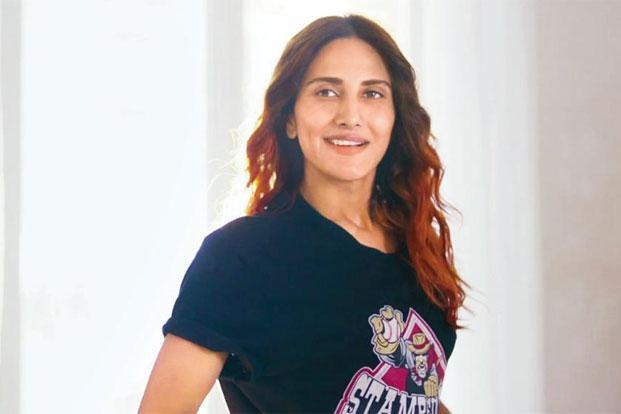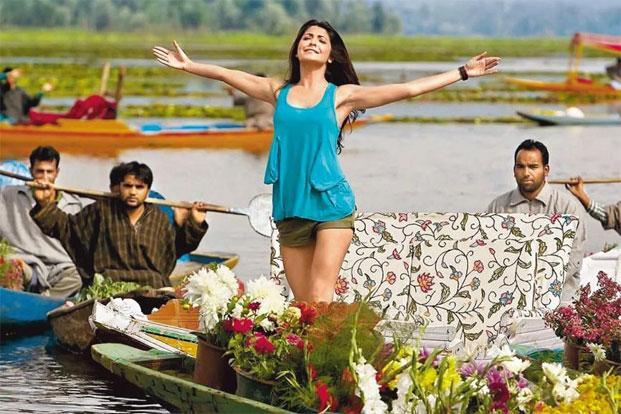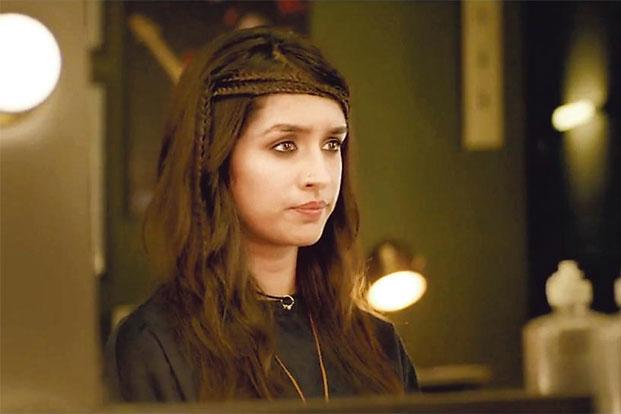First-World Yoga Names and what they say about an anxiety to fit in with a globalized world
In one of the genuinely witty sequences in Ae Dil Hai Mushkil, Ranbir Kapoor meets Aishwarya Rai Bachchan at an airport lounge. “Aur batao aur kya haal chaal hai, kya karti hain aap (So what’s up, what do you do)?”
“Main shayra hoon (I am a poetess),” she says.
“Shayraji, main Ayan hoon (Shayraji, I am Ayan),” he replies.
She giggles and says, “Main shayra hoon, my name is Saba.”
It is a nice touch from the film’s director Karan Johar, a gentle dig at what he perceives to be a certain demographic’s confusion between a common noun (shayra) and a proper noun (Shyra). It was, also, likely a reference to his friend Aditya Chopra’s latest confection Befikre, which released six weeks after his film. Here, Vaani Kapoor plays a girl called Shyra.

A couple of weeks before Befikre, in Gauri Shinde’s Dear Zindagi, Alia Bhatt was Kaira. She is a cinematographer, she works in Mumbai, has work prospects in New York. Earlier this year, in Shinde’s partner R. Balki’s film Ki & Ka, Kareena Kapoor Khan was Kia. Shraddha Kapoor plays a singer called Jiah in Rock On 2. In Baaghi, which released earlier in the summer, Shraddha Kapoor was Sia, a film actor who bags leading roles. Alia Bhatt was Tia in last summer’s hit family drama Kapoor & Sons (Since 1921). In her debut film, Student Of The Year, Bhatt was called Shanaya, the posh prom queen of her school. Some years ago, Anushka Sharma was Akira in Yash Chopra’s Jab Tak Hai Jaan. Last year, Sonakshi Sinha was the title character in A.R. Murugadoss’ Akira. She plays a college girl who is capable of taking on a squad of able-bodied men single-handedly (Sinha’s Akira is different from Sharma’s Akira though, she was from small-town Jodhpur and wore salwar-kurtas; indeed, she is distinct from this posh cohort in general).
Kaira, Shyra, Akira, Kia, Tia, Sia. Shanaya. These are Bollywood’s cool new names, broadly classified into the “ya” or “ra” nomenclature. The Poojas, Nishas, Anjalis and Nehas of the 1990s are déclassé. These new names carry an unmistakable aspiration to be global.They are unrooted to place, community or any kind of identity except class. They are almost never longer than three syllables and easy to pronounce. They float on coolness and lightness. An ex-colleague memorably christened them “First-World Yoga Names—FWYN”.

There is a nice reference to names in the Bengali film Maach Mishti & More (2013). Actor Soumitra Chatterjee, a chatty grandfatherly type in the movie, is curious about a young girl at a roadside tea stall. “What’s your name?” he asks.
“Sunny,” she replies.
“Bengali?”
“Yaa, you have a problem with that?”
“A bit, yes. I’ve never heard of a Bengali name like Sunny in my lifetime.”
I feel a lot like this. What are these names? Who thinks of them? Why are they so baffling? Be honest: Do you know anyone called Shanaya or Shyra who is above the age of 12? That is, anyone from what can be broadly termed the Indian identity. What happened to the Poojas, Anjalis, Nehas, Nishas, and indeed the more old-fashioned Rajjos, Pushpas, Neenas?
One clue is provided by Johar. In a scene in his debut feature Kuch Kuch Hota Hai, Farida Jalal asks Johnny Lever where the puja room is. “Puja has not shown up for work today,” he replies.
“What? There’s no aarti (prayers) in the mornings?
“Who is Aarti?” he asks.
Perhaps Johar was implying that this kind of old-fashioned name was already bereft of meaning in his set. That they were just old habits. The girls had to be called something: call them Puja, Nisha, Anjali, et cetera. In his next film, Kabhi Khushi Kabhie Gham…, he shortened Pooja to Poo. In Student Of The Year, his heroine was called Shanaya. And in Ae Dil Hai Mushkil, a film which can also be read as Johar’s crush on Urdu culture, his heroine is called Alizeh—a name hitherto unheard of in Bollywood and likely to be unfamiliar to most Urdu speakers.
The FWYN appears, at first, to be wholly meaning-free: Who is to say what Sia means or Kia or Kaira or, before Johar told us, Shyra? But they likely claim a global register of meaning—outside the largely Hindi-Hindu and partially Urdu-Islamic axes of Bollywood nomenclature. In fact, these names are almost completely removed from the old markers of place, religion, community. Who can say where Shyra is from, what Shanaya’s mother tongue is, what kind of food they make at Kia’s home?

If you are the bearer of an FWYN, you typically inhabit a glamorous professional identity. Kaira is a cinematographer in Dear Zindagi. Shyra is a tourist guide in Paris in Befikre. Jiah is a singer in Rock On 2. Akira is a documentary film-maker in Jab Tak Hai Jaan. Most of them pursue creative work. The exception is Kia, who is a marketing honcho in Ki & Ka. But it is nevertheless a highly paid, powerful job, something that is nicely captured in the High Heels song. Sometimes these girls do nothing—Tia in Kapoor & Sons or Shanaya in Student Of The Year. Yet, somehow, we picture them doing posh work, work that features cameras or recording equipment or PowerPoint in heavy doses.
What you definitely don’t see them working in are dusty downmarket jobs, like a schoolteacher (Bhumi Pednekar in Dum Laga Ke Haisha) or a clerk (Vidya Balan in Kahaani 2: Durga Rani Singh) or a nurse (Aishwarya Rai Bachchan in Guzaarish) or even a doctor (Kareena Kapoor Khan in Udta Punjab, Rani Mukerji in Saathiya). Indeed, one of the central pleasures of the Kahaani films is this texture of a not-so-shiny universe.
Closely related to professional identity is class; and indeed, the only identity that the FWYN remains connected with is class. When we hear Kaira, or Shyra, or Shanaya, we picture a montage of scenes—working out of Starbucks cafés, taking long-haul flights alone, multilingual flirting, downing shots with friends. We think of elite boarding schools, and foreign degrees. “Baba, do these people only roam around in Paris and New York?” my mother often asks aloud. It makes me laugh out loud, but I can see where her annoyance comes from.
There have, of course, been posh girls in Bollywood before. Girls who live in houses with sweeping staircases, majestic pianos in chandelier-fitted halls and fathers in dressing gowns. But the names of the posh girls were no different from the names of the subaltern girls. Nargis Dutt was heiress Neena in Andaz and peasant Radha in Mother India. Sharmila Tagore was rich daughter Renu in Waqt and flower-girl Champa in Kashmir Ki Kali. Zeenat Aman was rich babe Sunita in Yaadon Ki Baaraat and secretary Sheetal in Roti Kapada Aur Makaan. Sridevi was the zamindar’s daughter Rekha in Himmatwala and the middle-class girl Chandni in Chandni. The class difference notwithstanding, class was not coded into names. Indeed, if anything, they were too similar—all along the Hindi-Hindu and, partially, the Urdu-Islamic axes (however, the Christian-Western name is largely code for the non-virginal heroine: Waheeda Rehman is Rosie in Guide, Zeenat Aman is Janice in Hare Rama Hare Krishna, Dimple Kapadia is Bobby and Lakshmi Narayan is Julie in the two eponymous films, Deepika Padukone is Veronica in Cocktail).
And, class did not seem to limit their destinies either. The great promise of the Hindi film, the critic Trisha Gupta has written in a 2014 article on Yahoo!, was that love was possible in spite of divides of class. Given that the FWYN is a code for lives lived in Paris, San Francisco, Sydney, of Starbucks, Uber and business-class airport lounges and an entire atlas of neo-liberal affluence, what are the chances of a chance meeting with the plumber or the teacher’s daughter at the local bus stop or the bank around the corner?
The rub is that Bollywood is actually more invested in small-town lives today than it was before (Raanjhanaa, Dum Laga Ke Haisha, the Tanu Weds Manu and Gangs Of Wasseypur films) and in subaltern lives within the big city—Titli, Talaash, Oye Lucky! Lucky Oye!. Yet the possibility of these subaltern lives intersecting with the neo-liberal affluence of the FWYN seems to be becoming increasingly remote. What are the chances that Bhatt’s Kaira would hook up with a receptionist, given that her four beaus in Dear Zindagi are a restaurateur, a film-maker, a singer and a furniture designer? Would Kareena Kapoor Khan’s Kia in Ki & Ka go out on a date with a cook from a local biryani joint?
There’s also a male catalogue for the FWYN—far less exciting and quite limited compared to the women. Essentially, this constitutes three names—Adi, Sid and Kabir. Of these, Kabir has enjoyed the most popularity—everyone from Abhay Deol to John Abraham, Ranbir Kapoor, Ranveer Singh, Imran Khan and Arjun Kapoor has played a Kabir. The Sids, Adis and Kabirs have similarly glamorous work identities—they are photographers (Ranbir Kapoor in several films), artists (Akshaye Khanna in Dil Chahta Hai), musicians (Farhan Akhtar in the Rock On films), criminal masterminds (Abraham in Dhoom, Imran Khan in Kidnap) and house husband (Arjun Kapoor in Ki & Ka). But arguably women are signalers of social identity in a way that men are not. They are bearers of honour, they are markers of modernity (isn’t that what we call families/communities that educate their girls/women?), and when, like the Kairas and Shyras, they inhabit the spaces and freedoms we associate with men, they represent Westernized possibilities of gender equality. Typically, this would be the reality/aspiration of a privileged, well-travelled elite.
Over the past couple of decades, a trend of the Chinese middle and upper-middle class adopting anglicized names has become visible. The British royal family and the names of global celebrities from the anglophone world are popular in the adoption market. At my university in Edinburgh, and during a fellowship in Singapore, I met Angelas, Audreys, Steves, Williams, Dianas and Angies who all had Chinese names on their legal documents. A 2009 essay on Slate notes that this is a phenomenon of Deng Xiaoping’s market reform—as China opened up to business with the world, the class that did this business was tired of having its names mangled by their Western business partners. They chose names that were easy to pronounce in the anglophone world.
Perhaps this business of the FWYN is another form of this impulse—the desire/anxiety to fit in with a globalized world shaped by neo-liberalism. Indeed, Bollywood’s Kairas, Shyras and Shanayas are shaped from their slice of lived reality. For the list of Bollywood star children itself comprises several unusual names—Akira, Shakya, Anya, Diva, Czar, Saira, Viaan, Kiaan, Riaan, Nysa, Renee and Maira. It is significant to point out that the Chinese retain their traditional names and take on an Anglicised name as a second identity. The posh Indian demographic, however, doesn’t do this. They seem happy to change their nomenclature itself.
First published in Mint Lounge January 2017